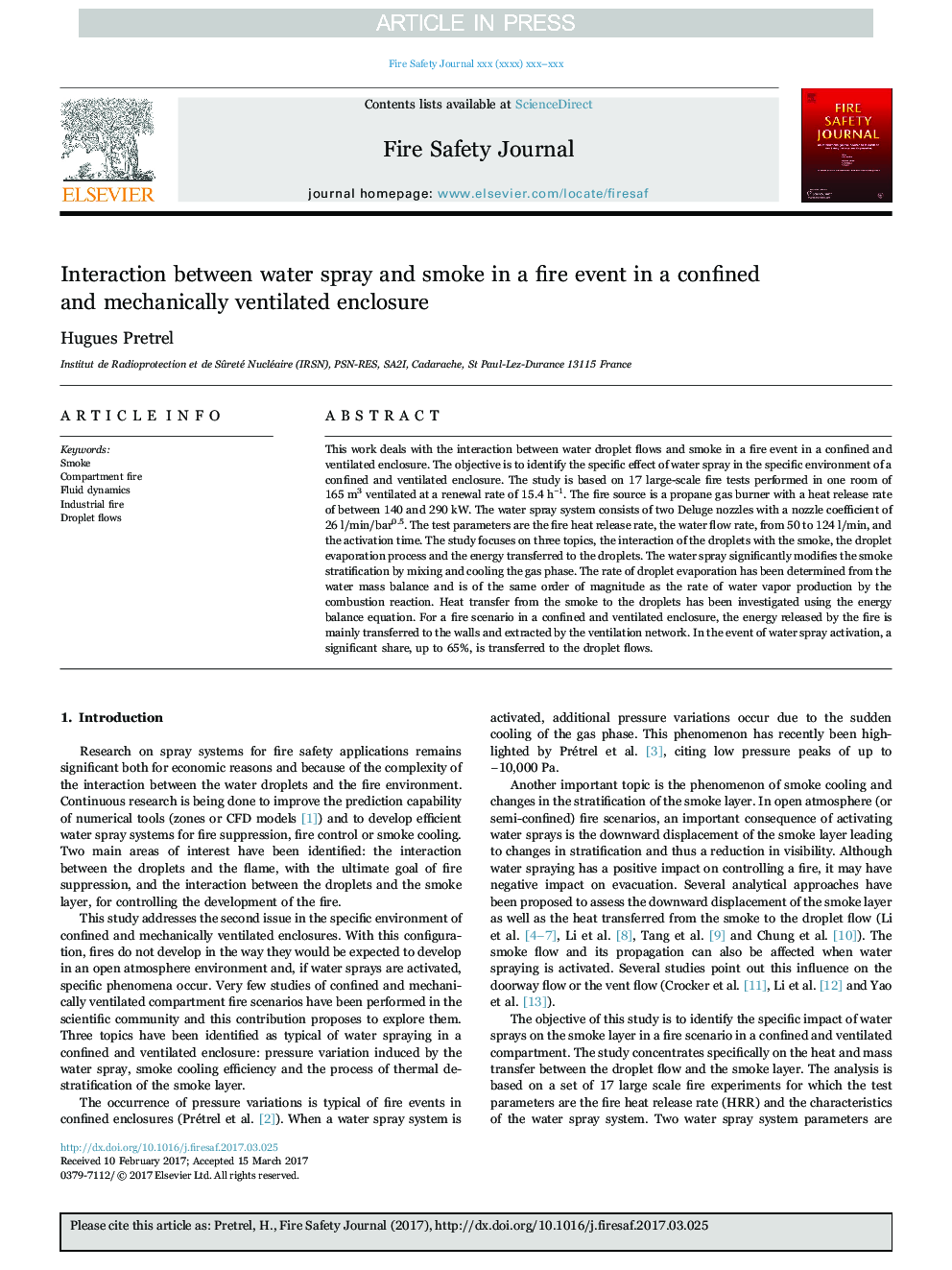| Article ID | Journal | Published Year | Pages | File Type |
|---|---|---|---|---|
| 4920914 | Fire Safety Journal | 2017 | 11 Pages |
Abstract
This work deals with the interaction between water droplet flows and smoke in a fire event in a confined and ventilated enclosure. The objective is to identify the specific effect of water spray in the specific environment of a confined and ventilated enclosure. The study is based on 17 large-scale fire tests performed in one room of 165Â m3 ventilated at a renewal rate of 15.4Â hâ1. The fire source is a propane gas burner with a heat release rate of between 140 and 290Â kW. The water spray system consists of two Deluge nozzles with a nozzle coefficient of 26Â l/min/bar0.5. The test parameters are the fire heat release rate, the water flow rate, from 50 to 124Â l/min, and the activation time. The study focuses on three topics, the interaction of the droplets with the smoke, the droplet evaporation process and the energy transferred to the droplets. The water spray significantly modifies the smoke stratification by mixing and cooling the gas phase. The rate of droplet evaporation has been determined from the water mass balance and is of the same order of magnitude as the rate of water vapor production by the combustion reaction. Heat transfer from the smoke to the droplets has been investigated using the energy balance equation. For a fire scenario in a confined and ventilated enclosure, the energy released by the fire is mainly transferred to the walls and extracted by the ventilation network. In the event of water spray activation, a significant share, up to 65%, is transferred to the droplet flows.
Keywords
Related Topics
Physical Sciences and Engineering
Engineering
Civil and Structural Engineering
Authors
Hugues Pretrel,
